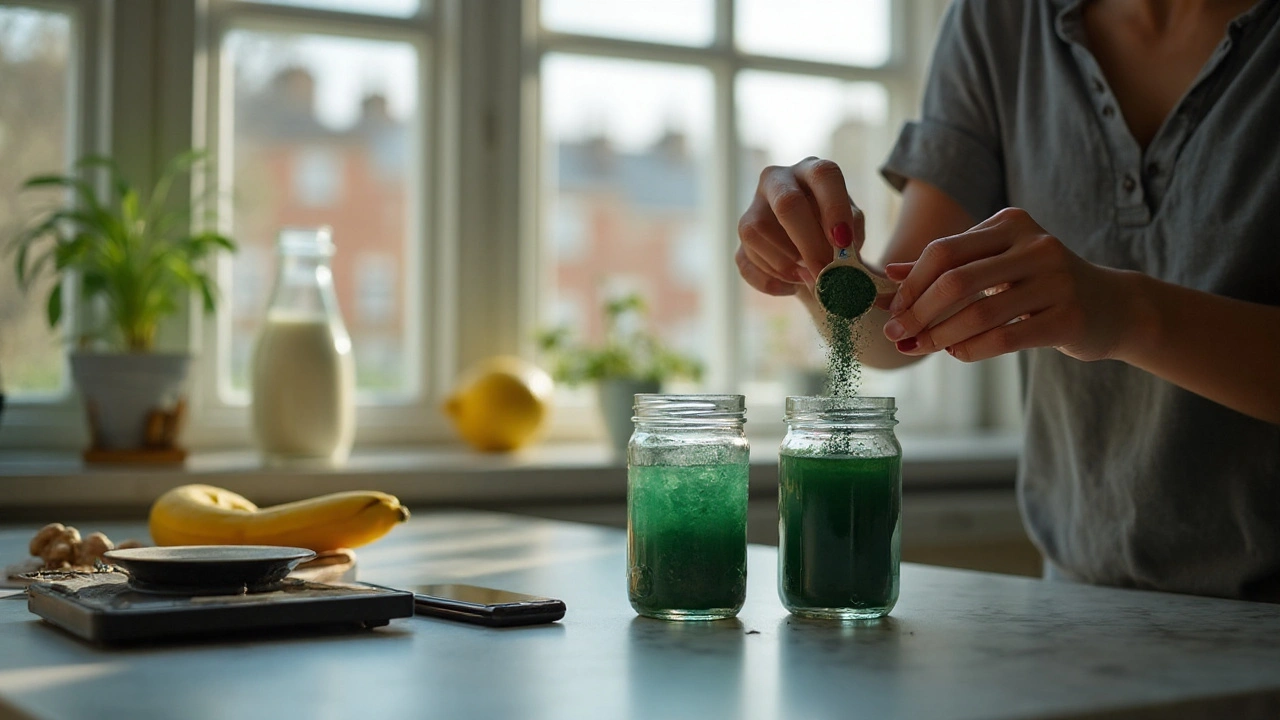Spirulina Benefits & How to Use It
If you’ve heard the buzz about spirulina but aren’t sure why it’s so popular, you’re in the right place. This tiny blue‑green algae packs a punch of protein, vitamins, and antioxidants that many people swear by for energy, immunity, and overall wellness.
What Is Spirulina?
Spirulina is a type of cyanobacteria that grows in fresh or salt water. It looks like a deep green powder when dried, and it’s harvested from farms that control the water quality to keep contaminants out. Because it’s a single‑cell organism, every gram contains a dense mix of nutrients: about 60% protein, B‑vitamins, iron, magnesium, and a pigment called phycocyanin that gives spirulina its signature color.
How to Add Spirulina Into Your Day
The easiest way to start is with a small scoop (around 1 gram) mixed into a smoothie, juice, or even water. The taste can be earthy, so blending it with fruit or a splash of lemon helps mask any bitterness. If you’re not a fan of powders, tablets are an option – just pop the recommended number each day.
Here’s a quick routine you can try:
- Morning boost: Add half a teaspoon to your breakfast smoothie with banana and almond milk.
- Pre‑workout snack: Mix one gram into a glass of orange juice for extra stamina.
- Evening wind‑down: Stir a pinch into warm water and sip slowly before bed.
Start with a low dose and increase gradually if you feel good. Most people notice better energy or clearer skin within a week, but listen to your body – too much can cause stomach upset.
Choosing Quality Spirulina
Not all spirulina is created equal. Look for these signs of a clean product:
- Certified organic or non‑GMO: Guarantees the algae wasn’t grown with harmful chemicals.
- Third‑party testing: Labs check for heavy metals, microcystins, and other toxins.
- Bright green color: Deep, vibrant shade usually means it’s fresh and hasn’t been over‑processed.
A reputable brand will list the source farm and provide a batch number for traceability. If price looks too good to be true, it probably is – cheap spirulina often comes from uncontrolled ponds where contaminants can build up.
Top Health Perks You Might Feel
People take spirulina for several reasons:
- Protein source: Great for vegans or anyone looking to add muscle‑building fuel without meat.
- Immune support: Antioxidants like phycocyanin help fight oxidative stress, which can keep you feeling healthier during cold season.
- Iron boost: The iron in spirulina is easily absorbed, useful for those with low iron levels.
- Digestive aid: Enzymes in the algae may help break down food and improve gut comfort.
These benefits are backed by a mix of lab studies and real‑world anecdotes. While spirulina isn’t a miracle cure, it can be a handy addition to an already balanced diet.
Wrapping Up
Spirulina is cheap, easy to store, and versatile enough for smoothies, soups, or pills. By picking a clean brand and starting with a modest dose, you can see if the extra protein, vitamins, and antioxidants give you that extra edge in daily life. Give it a try for a few weeks, track how you feel, and adjust as needed – your body will let you know what works best.
Blue‑Green Algae Detox: Spirulina vs Chlorella Benefits, Safety, and How to Start (2025 Guide)
Curious about blue‑green algae for detox? Get the facts on spirulina vs chlorella, real benefits, safety, dosing, and clean buying tips so you can start smart.
